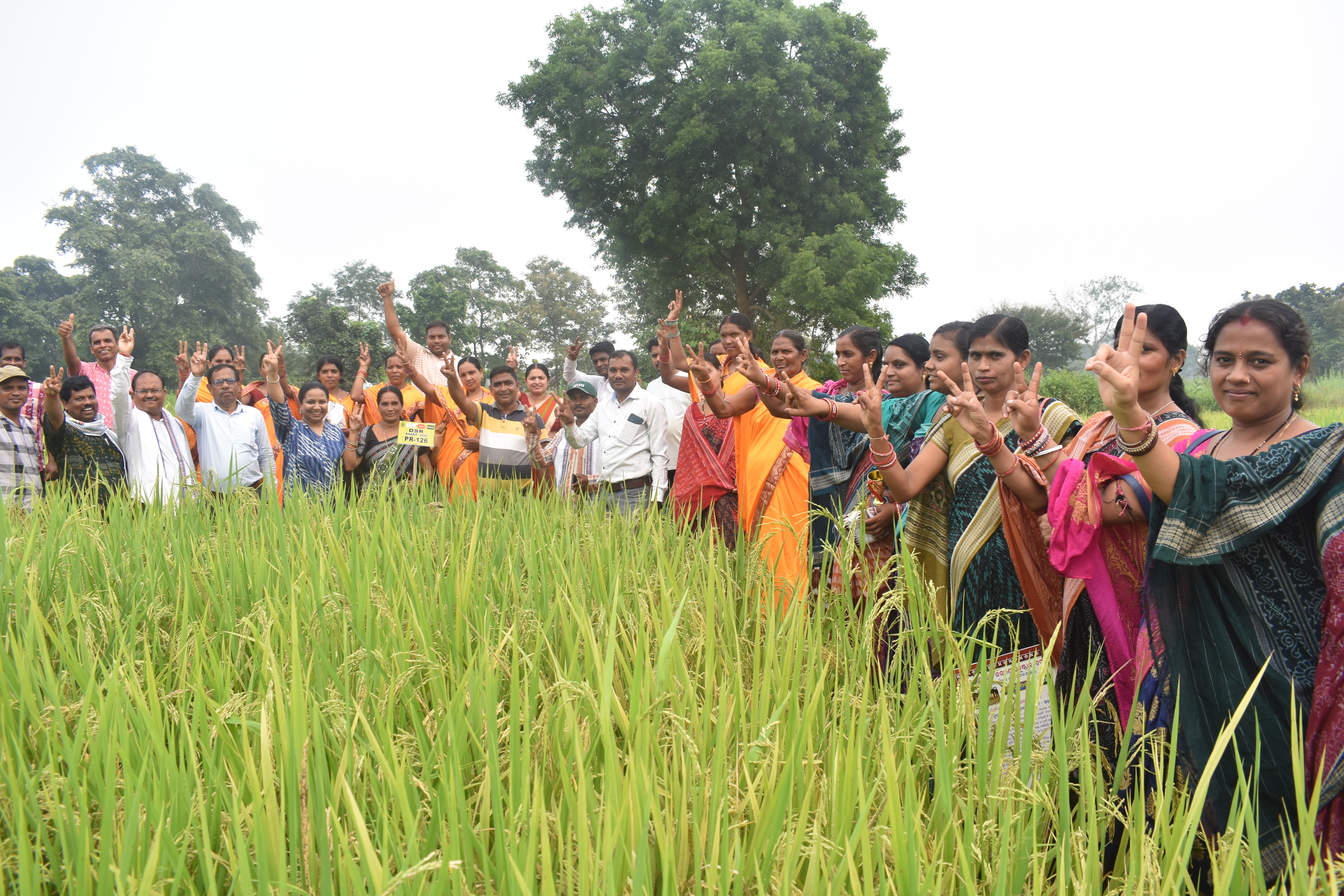The inroads of direct-seeded rice with the low-input responsive PR-126 variety (A case study from Odisha’s smallholder ecosystem)

Authors: Dillip Kumar Rout*, Sk Mosharaf Hossain*, Swati Nayak*, and Amaresh Chandel**
Rice is a crucial staple food for over 95% of Odisha’s population. This principal cereal bears immense significance culturally and economically. Bargarh District is known for its vast rice acreage and productivity. Rice is grown in about 235,000 (6.5% of total rice area) hectares every year. Compared to neighboring districts, irrigation is better in Bargarh and farmers tend to grow rice using traditional cultivation. This involves transplanting rice seedlings into puddled soil which requires intensive labor, water resources, and energy. However, changing climate and water scarcity in the rainfed areas and huge water in the lowland areas of Odisha have prompted farmers to consider alternative planting methods such as the dry direct-seeded rice (DSR) production system. The fear of lower yield, high weed infestation, and machine unavailability often deter farmers from adopting DSR. Moreover, shifting to DSR confronts several behavioral barriers.
The International Rice Research Institute (IRRI), a long-standing partner in the region, has been actively demonstrating improved rice technologies and scaling their adoption. Recognizing the multifaceted constraints associated with DSR, IRRI deployed a comprehensive package of DSR that includes variety, machines, and best practices for weed management. This support is aimed at overcoming the significant challenge that often hinder farmers from opting for DSR—a suitable and competitive variety.
Why is DSR relevant in Bargarh?
The reduced monsoon spell and associated water crisis in the region have encouraged farmers to shift towards DSR. The areas around the Hirakud Water Reservoir, which benefits irrigation water, provides an opportunity for wet DSR with a drum seeder. On the other hand, dry DSR with a seed drill is apt in areas where water scarcity is severe. The communities in the region have been customizing the establishment practices according to the need and feasibility. The high demand for labor during transplanting, labor scarcity, rising wage rates, and cost of cultivation in puddled transplanting rice has further motivated farmers to explore direct seeding because it requires significantly fewer person-days per hectare.
About the intervention
Through ScaleDirect’s interventions, 15 host farmers from the local community were mobilized to evaluate a pool of new hybrids and inbred rice varieties that perform better in DSR establishment. It included a local check (MTU-1010) and benchmark (Sahabhagi dhan) varieties as well. The MTU-1010 has been grown in the region for a long time. The varietal trials were conducted in the villages of Katapali in Bargarh, Pada in Bijepur, Baulsinga in Bhatli, and Archa in Padampur. The villages were selected using a GIS-based DSR suitability map. The experiment involved sowing these varieties in dry conditions using a seed and fertilizer drill machine. The seeds were sown on the same date, maintaining equal distance and area.
In addition to varieties, IRRI’s team of researchers facilitated the availability of a seed drill machine engaging local service providers, which is crucial in DSR for good crop establishment. The machine sows the crop uniformly. Through a series of community meetings, experts disseminated weed management practices in DSR including the judicious and needful application of pre-and post-emergence herbicides using a sprayer. Manual weeding when the need arises was also advised. Because the farmers mostly use the puddle-transplanted rice method in the region and stay away from DSR for crop management production problems, the field team monitored and facilitated the process in coordination with the community. District and block-level agriculture officers were consulted for their expert opinion and field support to ground this intervention. The nearest Krishi Vigyan Kendra Knowledge Network (KVK) and a community-based organization provided support in implementing the intervention at the targeted site. They were also engaged in field monitoring and timely advice.
The on-farm results
Seven varieties were tested under direct-seeded early-maturity market segmentation in the on-farm trials where the hybrid variety AZ-8455DT was the top performer overall and produced a yield of 5.5 tons/ha. PR-126 stood out as the highest yielder among the inbred varieties. The high yield of PR-126 (5.4 tons/ha) was significantly higher than other test varieties and local checks.
About the Authors:
*International Rice Research Institute
**Bayer Crop Science Pvt. Ltd.
About the Project:
ScaleDirect is a unique Public-Private Partnership engaging IRRI-Bayer, supported by USAID and implemented by IRRI and its NARES Partner networks in 6 countries; namely India, Bangladesh, Nepal, Kenya, Tanzania, and Mozambique

